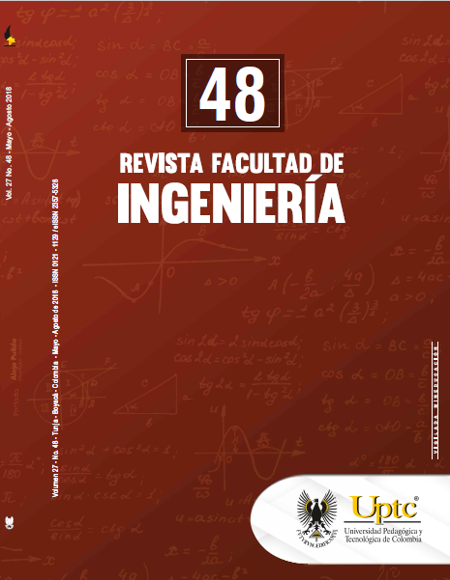Effect of copper-enriched layers on localized corrosion of aluminium-copper alloys

Abstract
Copper-enriched layers were developed onto aluminum-copper alloys using alkaline etching in sodium hydroxide, for both, sputter deposited and bulk conditions. Enriched alloys were evaluated by potentiodynamic polarization in sodium chloride solution in order to determine the effect of the enriched layers on the pitting potential of the alloys. Rutherford backscattering spectroscopy was employed to quantify the enrichments and their locations just beneath the alumina-based oxides remaining from the etching. For the sputter deposited aluminum-copper alloys, the results show some scattering of the pitting potential data, and no correlation between pitting potential and the alloy enriched layer. In the case of bulk Al-2wt.%Cu alloy, with the copper in solid-solution, the pitting potential increased for the enriched specimens, indicating also a different pit morphology, with respect to the non-enriched alloy.Keywords
aluminium-copper alloys, anodizing, copper enrichment, pitting
References
- M. K. Cavanaugha, J.-C. Lia, N. Birbilis, and R. G. Buchheit, “Electrochemical Characterization of Intermetallic Phases Common to Aluminum Alloys as a Function of Solution Temperature,” J. Electrochem. Soc., vol. 161, pp. C535-C543, Dec. 2014. DOI: http://doi.org/10.1149/2.0361412jes. DOI: https://doi.org/10.1149/2.0361412jes
- N. Birbilis, and R. G. Buchheit, “Electrochemical Characteristics of Intermetallic Phases in Aluminum Alloys,” J. Electrochem. Soc., vol. 152, pp. B140-B151, Apr. 2015. DOI: http://doi.org/10.1149/1.1869984. DOI: https://doi.org/10.1149/1.1869984
- H. H. Strehblow, and C. J. Doherty, “Examination of aluminum copper films during anodic oxidation,” J. Electrochem. Soc., vol. 125, pp. 30–33, Jan. 1978. DOI: http://doi.org/10.1149/1.2131392. DOI: https://doi.org/10.1149/1.2131392
- M. A. Paez, T. M. Foong, C.T. Ni, G.E. Thompson, K. Shimizu, H. Habazaki, P. Skeldon, and G.C. Wood, “Barrier-type anodic film formation on an Al-3.5 wt% Cu alloy,” Corros. Sci., vol. 38 (1), pp. 59-72, Jan.1996. DOI: https://doi.org/10.1016/0010-938X(96)00102-3
- X. Zhou, H. Habazaki, K. Shimizu, P. Skeldon, G.E. Thompson, and G.C. Wood, “Copper enrichment in Al–Cu alloys due to electropolishing and anodic oxidation,” Thin Solid Films, vol. 293 (1-2), pp. 327–332, Jan. 1997. DOI: http://doi.org/10.1016/S0040-6090(96)09117-1. DOI: https://doi.org/10.1016/S0040-6090(96)09117-1
- Y. Liu, E. A. Sultan, E. V. Koroleva, P. Skeldon, G. E. Thompson, X. Zhou, K. Shimizu, and H. Habazaki, “Grain orientation effects on copper enrichment and oxygen generation during anodizing of an Al-1 at.% Cu alloy,” Corros. Sci., vol 45(4), pp. 789–797, Apr. 2003. DOI: http://doi.org/10.1016/S0010-938X(02)00126-9. DOI: https://doi.org/10.1016/S0010-938X(02)00126-9
- Y. Ma, X. Zhou, G. E. Thompson, M. Curioni, T. Hashimoto, P. Skeldon, P. Thomson, and M. Fowles, “Anodic film formation on AA 2099-T8 aluminium alloy in tartaric-sulphuric acid,” J. Electrochem. Soc., vol. 158 (2), pp. C17–C22, Feb. 2011. DOI: http://doi.org/10.1149/1.3523262. DOI: https://doi.org/10.1149/1.3523262
- R. K. Gupta, N. L. Sukiman, M. K. Cavanaugh, B. R. W. Hinton, C. R. Hutchinson, and N. Birbilis, “Metastable pitting characteristics of aluminium alloys measured using current transients during potentiostatic polarization,” Electrochim. Acta, vol. 66, pp. 245–254. Apr. 2012. DOI: http://doi.org/10.1016/j.electacta.2012.01.090. DOI: https://doi.org/10.1016/j.electacta.2012.01.090
- J. Pierrière, “Rutherford backscattering spectrometry,” Vacuum, vol. 37 (5-6), pp. 429-432, May. 1987. DOI: http://doi.org/10.1016/0042-207X(87)90327-7. DOI: https://doi.org/10.1016/0042-207X(87)90327-7
- L. R. Doolittle, “Algorithms for the rapid simulation of Rutherford backscattering spectra,” Nucl. Instrum. Meth.B, vol. 9(1), pp. 344-351, Jun. 1985. DOI: http://doi.org/10.1016/0168-583X(85)90762-1. DOI: https://doi.org/10.1016/0168-583X(85)90762-1
- G. S. Frankel, J. R. Scully, and C. V. Jahnes, “Repassivation of Pits in Aluminum Thin Films,” J. Electrochem. Soc., vol. 143 (6), pp. 1834-1840, Jun. 1996. DOI: http://doi.org/10.1149/1.1836912. DOI: https://doi.org/10.1149/1.1836912
- J. R. Galvele, “Transport processes in passivity breakdown—II. Full hydrolysis of the metal ions,” Corros. Sci., vol. 21 (8), pp. 551-579, Aug. 1981. DOI: http://doi.org/10.1016/0010-938X(81)90009-3. DOI: https://doi.org/10.1016/0010-938X(81)90009-3
- S. Garcia-Vergara, F. Colin, P. Skeldon, G. E. Thompson, P. Bailey, T. C. Q. Noakes, H. Habazaki, and K. Shimizu, “Effect of Copper Enrichment on the Electrochemical Potential of Binary Al-Cu Alloys,” J. Electrochem. Soc., vol. 151 (1), pp. B16-B21, Jan. 2004. DOI: http://doi.org/10.1149/1.1627343. DOI: https://doi.org/10.1149/1.1627343
- A. Broli, and H. Holtan, “Use of potentiokinetic methods for the determination of characteristic potentials for pitting corrosion of aluminium in a deaerated solution of 3%NaCl,” Corros. Sci., vol. 13(4), pp. 237-246, Apr. 1973. DOI: http://doi.org/10.1016/0010-938X(73)90002-4. DOI: https://doi.org/10.1016/0010-938X(73)90002-4
- G. S. Frankel, “The growth of 2-D pits in thin film aluminium,” Corros. Sci., vol. 30 (12), pp. 1203-1218, Dec. 1990. DOI: http://doi.org/10.1016/0010-938X(90)90199-F. DOI: https://doi.org/10.1016/0010-938X(90)90199-F
- G. S. Frankel, M. A. Russak, C. V. Jahnes, M. Mirzamaani, and V. A. Brusic, “Pitting of Sputtered Aluminum Alloy Thin Films,” J. Electrochem. Soc., vol. 136(4), pp.1243-1244, Apr. 1989. DOI: http://doi.org/10.1149/1.2096864. DOI: https://doi.org/10.1149/1.2096864
- X. Zhou, H. Habazaki, K. Shimizu, P. Skeldon, G. E. Thompson, and G. C. Wood, “Enrichment-dependent anodic oxidation of Zinc in Al-Zn Alloys,” Corros. Sci., vol. 38 (9), pp. 1563-1577, Sep. 1996. DOI: https://doi.org/10.1016/0010-938X(96)00051-0
- G. D. Davis, B. A. Shaw, B. J. Rees, and C. A. Pecile, “Electrochemical behavior and surface chemistry of non‐equilibrium aluminum–tantalum alloys: Solute‐rich interphase mechanisms,” Surf. Int. Anal., vol. 23 (9), pp. 609-617, Aug. 1995. DOI: http://doi.org/10.1002/sia.740230906. DOI: https://doi.org/10.1002/sia.740230906
- G. S. Frankel, R. C. Newman, C. V. Jahnes, and M. A. Russak, “On the Pitting Resistance of Sputter‐Deposited Aluminum Alloys,” J. Electrochem. Soc., vol. 140 (8), pp. 2192-2197, Aug. 1993. DOI: http://doi.org/10.1149/1.2220794. DOI: https://doi.org/10.1149/1.2220794
- M. M. Lohrengel, “Thin anodic oxide layers on aluminium and other valve metals: high field regime,” Mat. Sci. Eng. R, vol. 11(6), pp. 243-294, Dec. 1993. DOI: http://doi.org/10.1016/0927-796X(93)90005-N. DOI: https://doi.org/10.1016/0927-796X(93)90005-N
- X. Zhou, C. Luo, T. Hashimoto, A.E. Hughes, and G.E. Thompson, “Study of localized corrosion in AA2024 aluminium alloy using electron tomography,” Corros. Sci., vol. 58, pp. 299-306, May. 2012. DOI: http://doi.org/10.1016/j.corsci.2012.02.001. DOI: https://doi.org/10.1016/j.corsci.2012.02.001
- X. Zhang, X. Zhou, T. Hashimoto, and B. Liu, “Localized corrosion in AA2024-T351 aluminium alloy: Transition from intergranular corrosion to crystallographic pitting,” Mat. Characterization, vol. 130, pp. 230-236, Aug. 2017. DOI: http://doi.org/10.1016/j.matchar.2017.06.022. DOI: https://doi.org/10.1016/j.matchar.2017.06.022
Downloads
Download data is not yet available.